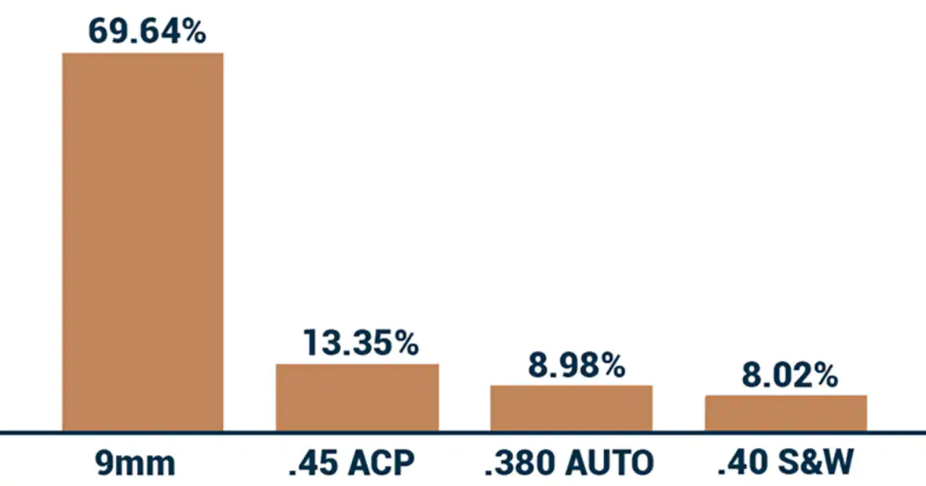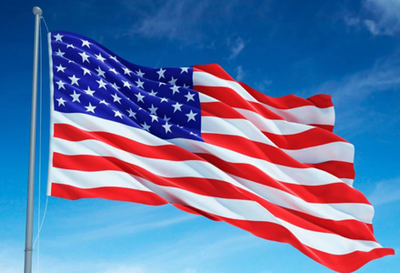America Loves 9mm
May 9th 2021
One of the most popular cartridges in America, the 9x19mm has seen drastic improvements in ballistic performance over the years. Paired with innovations in semi-automatic handguns, affordability, and widespread availability, it's no wonder the 9mm cartridge has become a favored round.
But how much does it lap its rivals .45 ACP, .380 Auto and .40 S&W? Using data pulled from Guns.com, we compared sales in all four cartridges over the past several months and the results make interesting reading.
Before we get to the data, let's dive into a quick history lesson on each of these cartridges.

A BRIEF HISTORY
The 9x19mm Parabellum-- also termed the 9mm Luger after its inventor, Georg Luger-- was introduced in 1902 by German weapons manufacturer DWM. After an extremely successful run during both World Wars I and II, NATO adopted the round in 1948, although the U.S. military did not get on board until 1986, and it remains a preferred cartridge. The 9mm is noted for its flat trajectory, moderate recoil, and fairly high velocity with decent penetration.
The .45 Auto Colt Pistol, or .45 ACP, made its way to the market in 1904, developed by famed inventor John Moses Browning. It was designed specifically for Browning's M1911 pistol. Both the .45 ACP and the M1911 endured great success during both World Wars and, and, as such, continues with a cult-like following to this day.
Another of Mr. Browning's designs was the .380 ACP, first introduced for use in the inventor's small-framed semi-autos such as the Colt Model 1908. Very popular in Europe, where the round is typically described as the "9mm Kurz" the .380 remains a good choice for those looking for a compact yet effective cartridge in the right load.
he .40 S&W, came to market in 1990, produced by gun makers Smith & Wesson and Winchester as a direct request from the Federal Bureau of Investigation. It was crafted to bring a power curve similar to the 10mm Auto with a more manageable recoil similar to that of a 9mm. It was extremely successful with law enforcement in both the U.S. and Canada from 1990 until about 2015 when the FBI transitioned back to 9mm. Since then, agencies are increasingly switching back to 9mm-chambered semi-autos.


